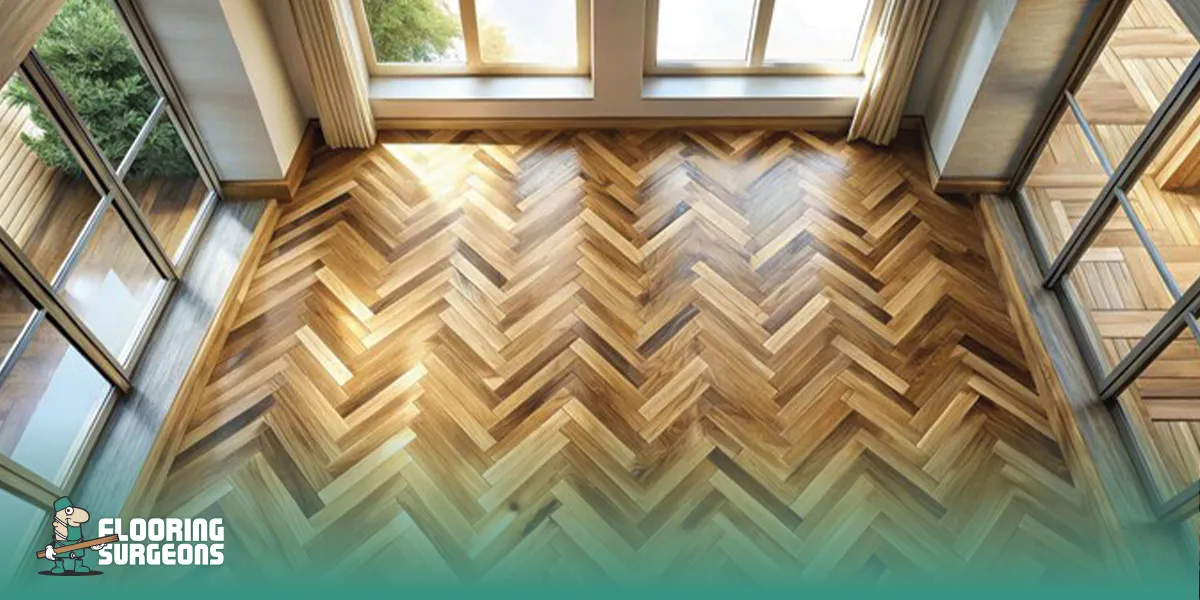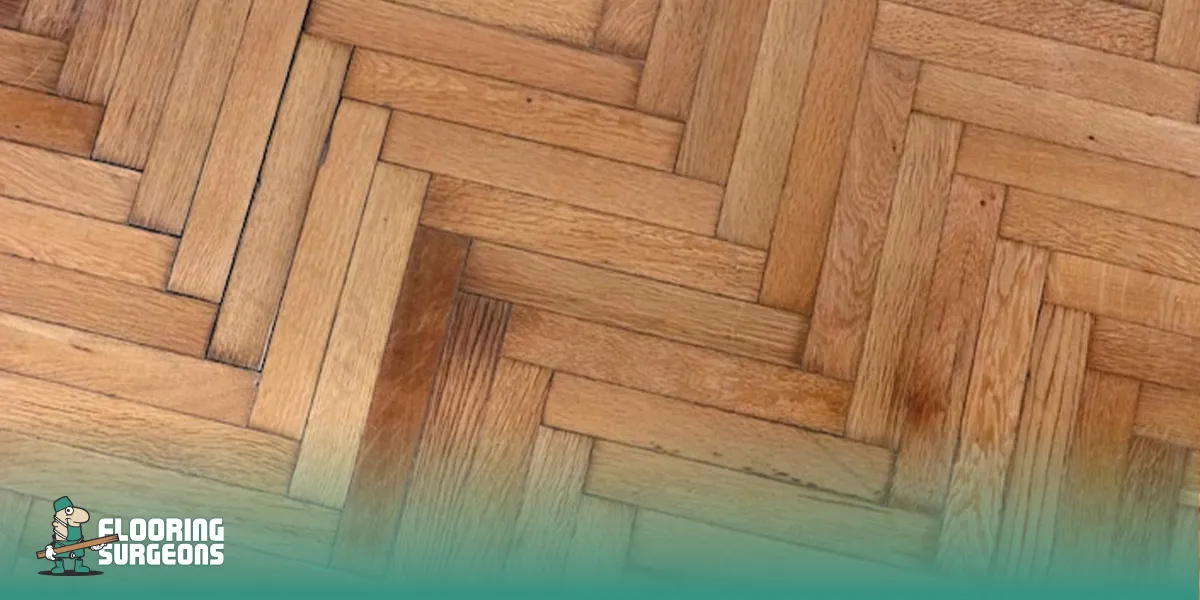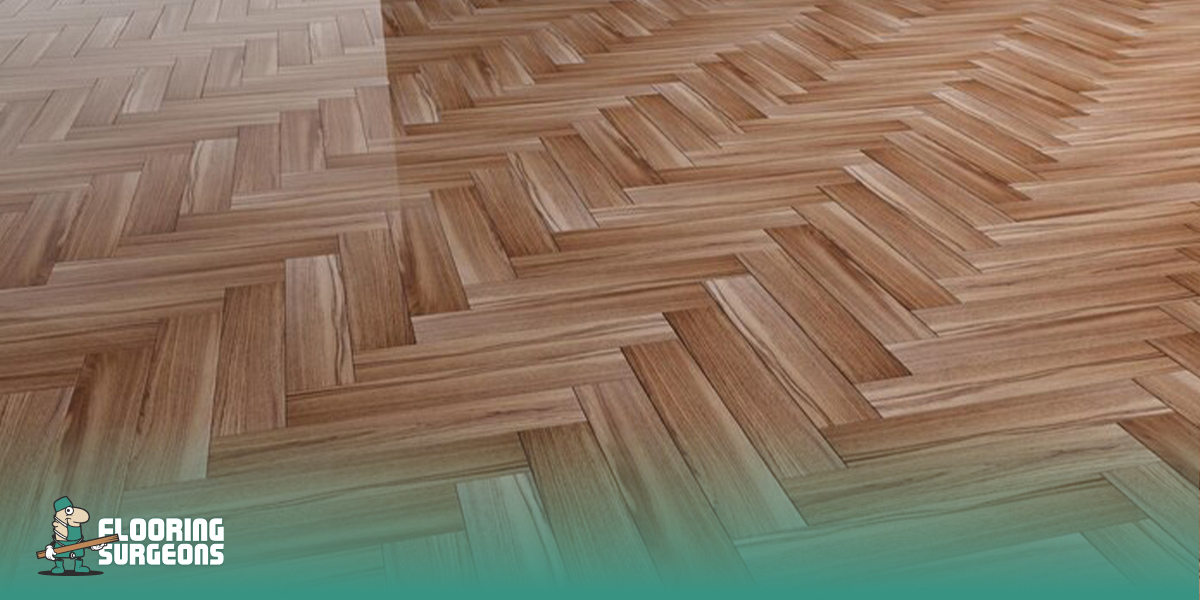5mm LVT or SPC herringbone is one of the most budget-friendly waterproof flooring choices, starting from £25–£35 per m², depending on the finish and brand. Thicker engineered or solid options can cost twice as much. It’s ideal for buyers who want design impact without overspending.
Yes — it’s durable for kitchens, bathrooms, and apartments. However, if your space sees heavy, constant use or frequent furniture movement, a thicker profile (10–12mm) offers extra strength. Always balance price vs performance before you buy.
Absolutely. It’s 100% waterproof, making it a top choice for bathroom flooring upgrades. You can even install it over existing tiles to save time and cost. Just ensure proper subfloor prep for best adhesion and longevity.
The click-lock system makes it DIY-friendly, but professional fitting guarantees long-term stability and a flawless pattern. If you’re buying this floor for a central kitchen or ensuite, the slight installation cost difference pays off in years of extra life.
Immediately. Unlike glued wood or tiled surfaces, LVT herringbone flooring requires no drying time. Once installed, it’s ready to use — a significant advantage for buyers who want a fast, no-delay renovation.
It’s almost maintenance-free. Regular sweeping and a mild floor cleaner are enough. Avoid steam mops or abrasive products. Buyers often choose this floor because it offers a luxury look with minimal long-term maintenance costs.
With proper installation and cleaning, it lasts 15–25 years. Its rigid core resists warping, and planks can be replaced individually — so you don’t need a complete refit. This makes its price-to-lifespan ratio better than most alternatives.
Yes. Most 5mm LVT/SPC products are designed for underfloor heating up to 27°C. It gives a warm, comfortable surface even in cold bathrooms — a huge selling point for buyers comparing vinyl vs tile prices.
It can be especially effective when installed neatly in visible spaces, such as kitchens or en-suites. Buyers and tenants value waterproof, low-maintenance flooring. Its designer pattern creates a premium look without the high price tag of solid wood.
You can explore our curated 5mm herringbone vinyl flooring collection directly at Flooring Surgeons. Each product includes full specs, price per m², and free expert advice before you buy — so you can shop with confidence and find the best match for your budget and space.
Let’s be honest — 5mm herringbone flooring isn’t made for every room, but when it fits, it fits perfectly.
Because of its slim profile, it’s the best choice for renovation projects where you don’t want to remove old tiles or lift skirting boards. It lies flat, locks tight, and instantly transforms spaces like:
Now for the honest part: this thickness isn’t built for everything.
In areas with heavy furniture, constant impact, or commercial foot traffic, a 5mm floor may flex slightly over time. For those situations, thicker profiles offer better strength and feel:
What 5mm flooring lacks in depth, it makes up for in innovation:
So while thicker floors win on density, 5mm herringbone wins on practicality. It’s not the heavy-duty choice — it’s the smart, flexible one that makes real-life upgrades fast, clean, and beautiful.

Bathrooms are not like other rooms — they’re a battlefield of heat, humidity, and rushing mornings. Floors here don’t just need to look good; they need to survive daily chaos. That’s where 5 mm herringbone vinyl tiles step in as the modern problem-solver — and where traditional materials like laminate and ceramic start to show their limits. For those seeking the same elegant pattern with superior resilience, explore our range of parquet and herringbone flooring crafted for both style and performance.
Most people don’t choose LVT because it’s trendy; they choose it because it works.
A 5 mm vinyl herringbone plank is engineered to be fully waterproof, meaning it doesn’t flinch when your toddler splashes half the tub across the floor or when steam builds up after a long shower.
It’s quiet, warm, and forgiving underfoot — which matters when you step out barefoot on a cold morning.
What makes it unique isn’t just the waterproof core; it’s the fact that you can install it directly over your old tiles in an afternoon. The herringbone pattern locks together with precision, so the design looks handcrafted even though it’s fast-fit.
Real-world advantages:
The only caution: LVT is not invincible — drop a metal razor edge-first, and it may leave a dent. But individual planks can be swapped in minutes, unlike tiles. For expert installation tips and premium replacement options, explore Flooring Surgeons for professional-grade solutions and guidance.
Laminate is often chosen because it looks like wood and costs less than vinyl. But in bathrooms, its biggest strength — a wood-based core — is also its weakness.
Even when marketed as “moisture-resistant,” it’s still made of compressed fibreboard, meaning water-resistant, ≠ waterproof.
It can absolutely work in guest bathrooms or cloakrooms where splashes are rare and you have good ventilation. The trick is perfect edge-sealing — one tiny gap left unsealed, and water will creep in, causing subtle swelling that ruins the fit of your herringbone pattern.
Where it makes sense:
Where it fails:
So, laminate gives you the wood aesthetic — but only if you’re ready to babysit it.
Ceramic and porcelain herringbone tiles have one undeniable strength: they last forever. But they also remind you of it every morning when your feet hit the cold surface.
They’re waterproof once grouted and sealed, yet grout is a magnet for mildew and discolouration if not cleaned regularly.
For full remodels where permanence and resale value matter, tiles are still a beautiful choice — just know they’re not the “weekend project” type.
Tile pros:
Tile cons:
Best suited for: family bathrooms that won’t change for decades, or high-end remodels where traditional craftsmanship is the goal.

| Feature | 5 mm LVT / SPC Herringbone | Water-Resistant Laminate | Ceramic / Porcelain Tile |
| Water Protection | Fully waterproof | Limited (needs sealing) | Fully waterproof |
| Warmth & Comfort | Soft, warm underfoot | Moderate | Cold & hard |
| Installation | Click-lock, same day | Simple DIY | Slow, grout required |
| Maintenance | Easy mop & wipe | Needs careful drying | Grout cleaning |
| Lifespan | 15 – 25 years | 8 – 15 years | 30 + years |
| Ideal Use | Family / Ensuite / Cloakroom | Guest / Low-moisture | Full Remodel / Heavy Use |
Flooring Surgeons’ Honest Take
If your bathroom is a living space — not just a showpiece — go with 5 mm luxury vinyl herringbone.
It’s warmer, quieter, and genuinely waterproof.
If you’re flipping a rental or working on a secondary washroom, water-resistant laminate gives you the look for less — just seal it properly.
And if you’re building a dream bathroom to last twenty years, porcelain herringbone tiles still reign supreme, provided you don’t mind the colder feel and slower installation.
In short:
Most flooring problems don’t start with harmful material — they start with bad installation.
That’s why, when you choose 5mm herringbone flooring, how it’s fitted is just as important as what it’s made of.
Why Proper Installation Matters
Because 5mm flooring is thinner and more flexible than engineered or solid wood, precision is everything.
Even a slight unevenness in the subfloor or a loose joint can shorten its lifespan.
When installed correctly, though, it becomes watertight, silent, and stable for years.
You’ve got two primary fitting methods:
Both give the same beautiful look — the difference is in how much traffic and moisture the floor will face.
Usually, yes — but only temporarily.
The room doesn’t need complete demolition, just clear floor space. Furniture, mats, and small fixtures should be moved to allow accurate fitting, especially around corners and trims.
Because 5mm planks click together cleanly, most kitchens or bathrooms can be completed in a single day. There’s no messy drying time, and you can walk on it immediately after installation.
That’s one of the biggest reasons people choose LVT over tiles — no waiting, no disruption.
Once installed, your job shifts from fitting to maintaining — and that’s where long-term value is built.
Here’s what to do if you want your 5mm herringbone floor to last beyond its warranty:
Do:
Don’t:
These small habits extend your floor’s life more than any polish or sealant ever could.
Even the best floor has limits. The main factors that shorten its life include:
If your floor begins to warp or lose click tension, it’s often due to improper installation, not product quality.

A properly installed and maintained 5mm LVT herringbone floor should last 15–25 years.
But if your space sees unusually high traffic (for example, a commercial kitchen or entryway), consider a thicker, more rigid option, such as 10mm or 12mm flooring.
These offer more weight resistance and less flex, which means fewer replacement cycles and lower long-term cost.
Still, for most homes — especially kitchens, bathrooms, and apartments — 5mm is the sweet spot between practicality, beauty, and easy upkeep.
Flooring Surgeons Tip:
The longest-lasting floors aren’t the ones that cost the most — they’re the ones installed right, cleaned right, and lived on with care.
If you treat your 5mm herringbone like the design feature it is, it’ll keep looking like new long after your next renovation.